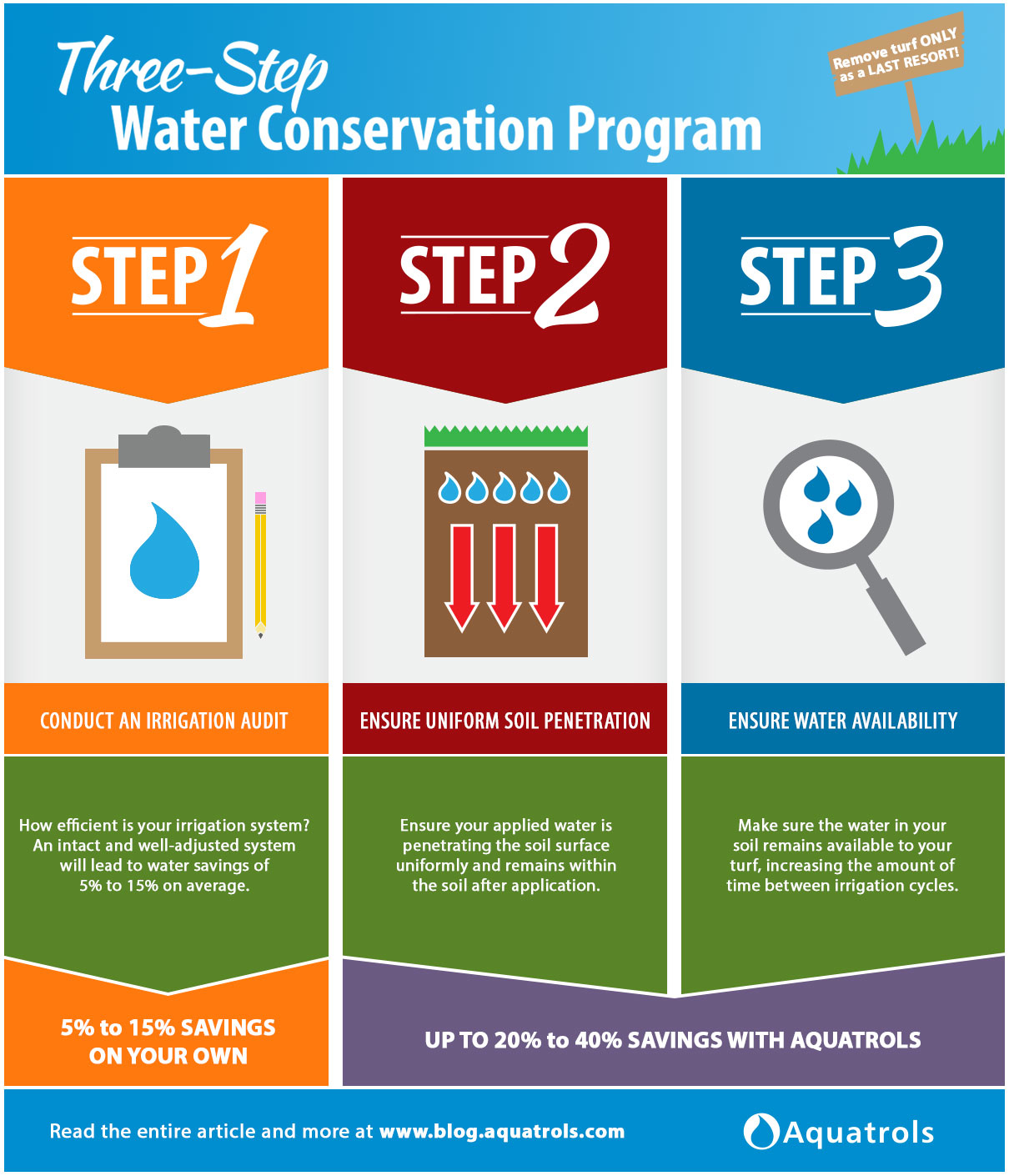Remove turf only as a last resort!
In the midst of continuing drought in California, many golf courses are searching for ways to cut back on water consumption. A major focus in the water conservation discussion – in California and elsewhere – has been the removal of turf.
While removing acres of turf will undoubtedly lead to less water consumption, there are other factors to weigh before simply stripping out large turf areas on your property.
For one, turf has many beneficial attributes. Turf is a great filter for water to pass through. It cleans the air we breathe and it has a cooling effect on the environment around it. Remove the turf and you will also lose all of its positive effects.
The second thing to consider is that turf removal is not the only way to conserve water. You may be able to produce the same amount of water savings by taking just a few simple steps.
<<< Check out the Three-Step Water Conservation Program infographic! >>>
For 60 years Aquatrols has devoted itself to making better use of water and other inputs in the turf, ornamental, and agricultural industries. We have thoroughly researched and developed products and cultural practices that increase water use efficiency and contribute to the sustainable management of soil-water-plant interactions.
Combining our extensive research with practical management strategies, we have come up with a simple, three-step conservation plan to conserve water without the need to remove acres of beneficial turf.
Step One: Conduct an irrigation audit. This will allow you to see how efficiently your irrigation system is applying water on the surface. An intact and well-adjusted irrigation system will lead to water savings of 5% to 15% on average.
<<< Archived Webinar: Learn how to conduct an irrigation audit >>>
Step Two: Ensure your applied water is penetrating the soil surface uniformly and remains within the soil after application. If you see water running off or channeling through the soil, or observe non-uniform wetting of the soil profile, there are likely physical and/or chemical inefficiencies that need to be addressed.
Step Three: Make sure the water in your soil is available to your turf. Water is held tightly around soil particles due to its adhesive and cohesive properties. These natural properties often make it difficult for roots to take up water as soils begin to dry down. By reducing the adhesive and cohesive tensions of water, soil surfactants increase the amount of water available to be used by turf in both wet and dry conditions. With more water available to plants, turf managers can significantly increase the time between irrigation cycles.

Incorporating an Aquatrols soil surfactant into your water conservation plan will ensure that water applied on the surface – either through irrigation or precipitation – will distribute evenly into and throughout the soil profile and remain available to your turf as the soil begins to dry down.
Aquatrols soil surfactants have proven to provide water savings of up to 20% to 40% in certain turfgrass species. Pair that with a well-maintained and adjusted irrigation system and you have a very significant source of water savings – all without needing to remove a single blade of turfgrass.
For more information on Aquatrols soil surfactants, contact your local Aquatrols distributor.
—
Ken Mauser, Aquatrols Agronomist & Southwest Territory Manager



Comments are closed.